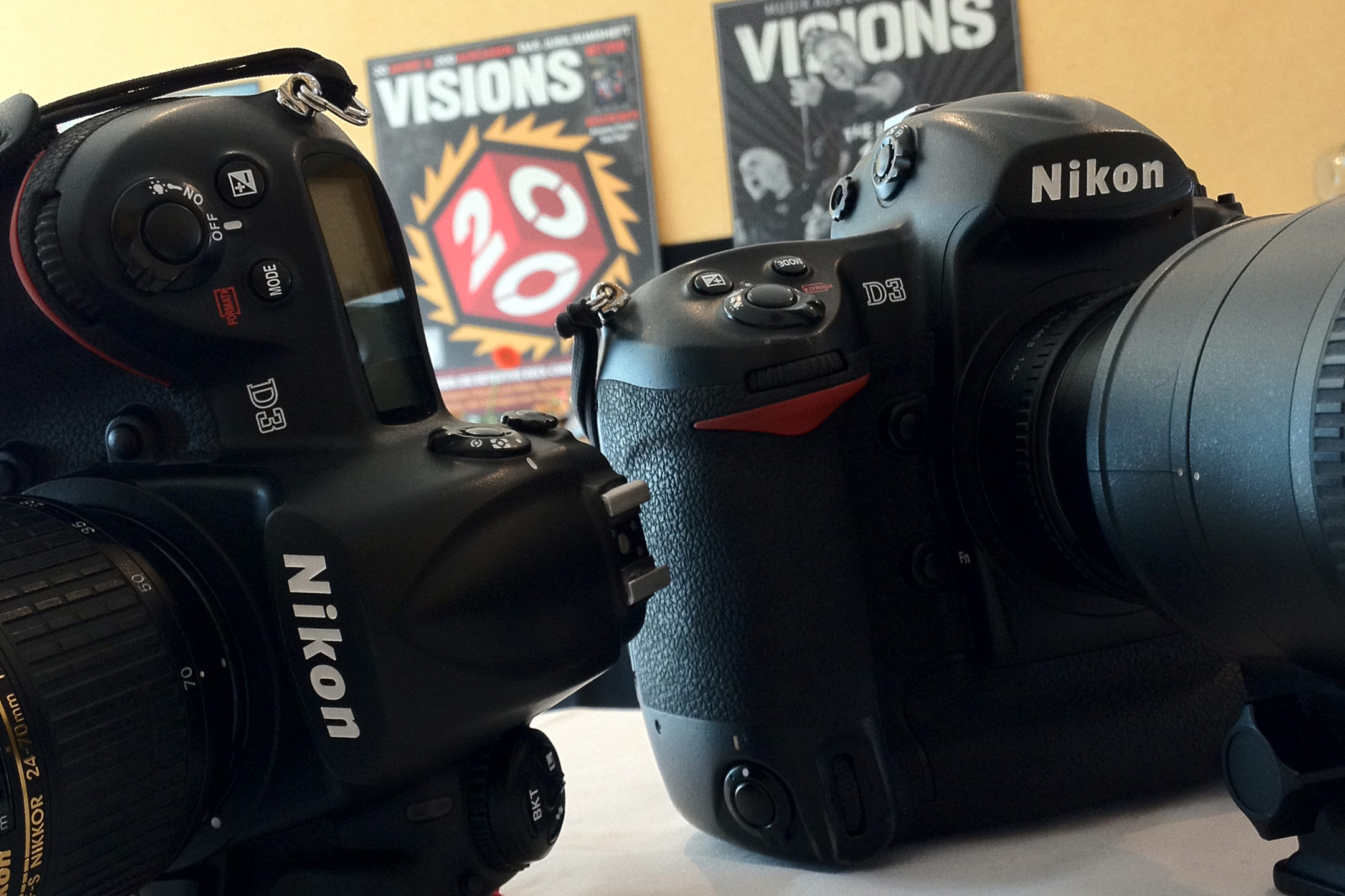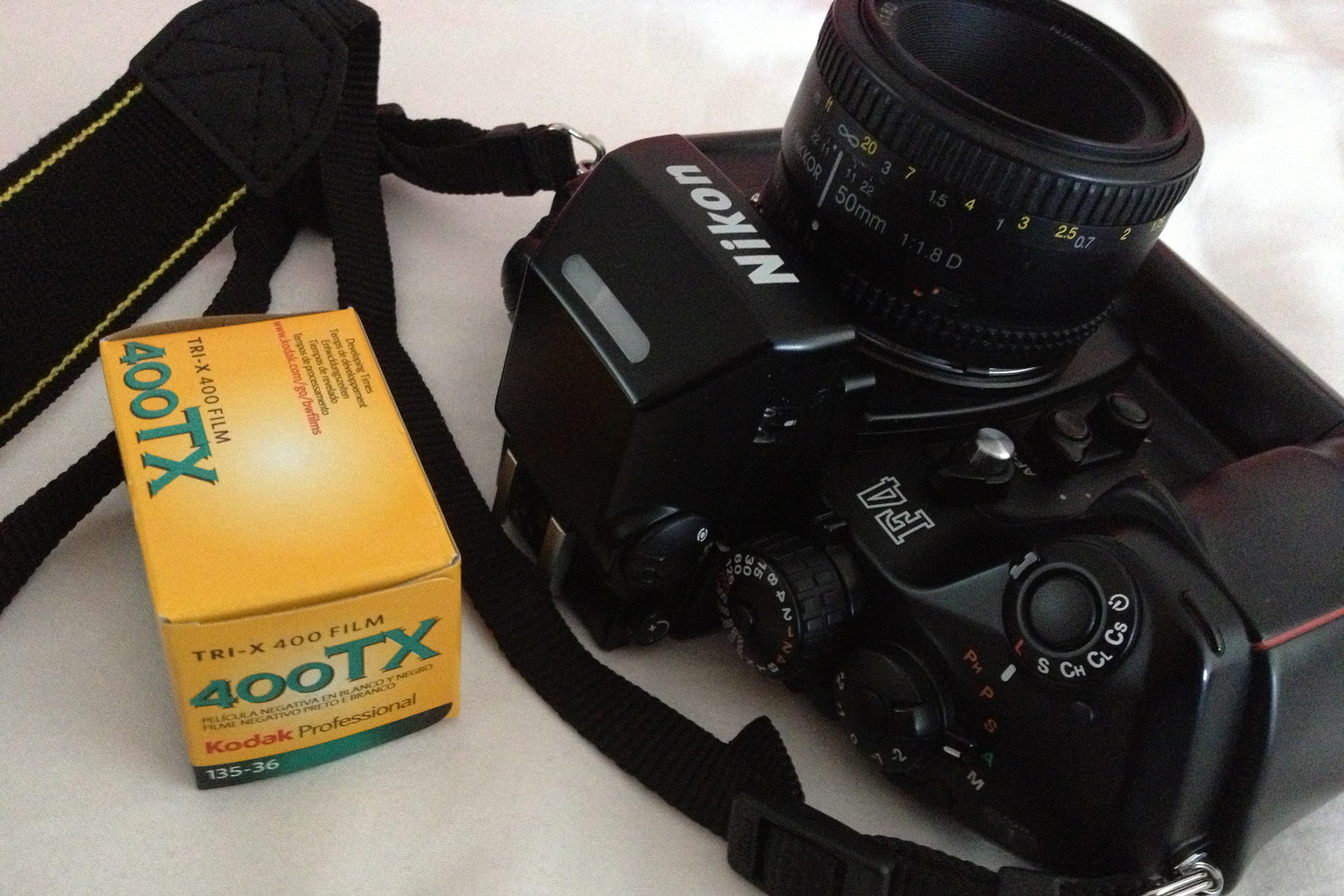Most questions i get are about gear. People never stop asking me for details on my cameras or which camera to buy... so let's talk about gear.
There is never the perfect gear. When i started back in 1993, i owned a Minolta X-300 with a 1.7/50mm Rokkor lens. By that time, Canon came up with the EOS models, fitted with one of the first autofocus systems that really made sense. So i saved some bucks and got me a Canon EOS 600 which was incredibe fast and tough. But there is always a better camera and i made the typical mistake many beginners make: I thought my pictures would get better with a better camera. Which is completely wrong, but as a gearhead (which i still am) i was dreaming of pro gear. So i sold the EOS 600 some years later, saved some more bucks and bought a Canon EOS 1n. A rock-solid camera, faster and with a even better autofocus. It was a great camera but in 2001, digital cameras became affordable. Some colleagues already used digital cameras and were happy even with the crappy ISO 1600 setting - so i bought a used one and threw away my film equipment.
Subsequently, i bought almost every model Canon released, 1D, 1D MKII, 1D MKIII... when suddenly Nikon came to me and offered me a D3 and some lenses for testing. I was completely overwhelmed what Nikon had developed - a fullframe camera with an incredible fast and accurate autofocus system (which Canon didn't have, the 1D MKIII was a complete desaster in terms of autofocus), rock-solid and flanked by some top-of-the-line lenses. So i sold all my Canon stuff and switched over to Nikon.

Two Nikon D3 at Rock am Ring 2012
Over the years i had almost everything from Fisheye to 2.8/400 lenses, zooms from 14mm to 200mm, fast primes - you name it. I wouldn't say the gear was somehow useless. But it lead away from what was really important: Focusing on the basic functions and stop getting distracted by special features or endless possibilites in terms of choosing what lens to take with you. I started using two D800s with 35mm and 85mm prime lenses and at that point there was a huge improvement to my pictures because my attention was lead away from the camera and back to the process of taking pictures. A big learning for me - and an expensive one, too.
So from that point -as i mentioned on the How is it to be-page- i always focused on keeping my gear light and simple. Pro cameras are super tough, reliable and fast - but they are also heavy and big. Since speed is nothing which helps you in the pit, i'd suggest to save some bucks and buy smaller semi-pro camera bodies and spend your budget on lenses. And, i'd always go for a fullframe camera over the smaller APS-C cameras, because the viewfinders are bigger, brighter and give you a more precise view - especially in dark lighting conditions.
There are a few things which might be very helpful: First, you should choose a camera with two slots for memory cards. Cards may fail, and they will in the most improper situation you can think of. Having a second card with a backup will save you. Second, look for a camera that allows you to set up a separate button for the autofocus system. It's extremely helpful to decouple the shutter button from the autofocus button, because you can reframe your shot and keep focus without half-pressing the shutter button all the time. Sounds unusual, but give it a try and you will instantly recognize the opportunities of a setup like this. Third, choose a camera with dust and water sealing. Showers happen and if you're lucky, it's only rain. But it might be beer as well - so, some basic sealing is a very good idea.
What about lenses? As mentioned before, light and fast is key for me. Three good prime lenses with focal lengths from 35, 50 and 85mm will enable you to cover almost everything. Keep an eye on the image quality - most of the very fast f/1.4-lenses have to be stopped down to at least f/2.0 due to color fringing or other aberrations. So save your money and buy a solid f/2 lens. Ultrasonic autofocus is a very good asset since it's fast and accurate which helps a lot. Again, look for a basic dust and water sealing, if available.
If you want to go for zoom lenses, your choice will be most likely a 2.8/24-70 and a 2.8/70-200 lens. Most 70-200 lenses will be fitted with an image stabilization system which might help above 135mm focal lengths and in critical situations. But, apart from being bulky and heavy, these lenses are unfortunately very, very expensive. You have to calculate up to 1500-2000 EURs for new ones and even used ones will cost not much less, since they are very durable and don't lose to much value over the time. So again: try to start with primes and go for zooms later on, when your budget allows bigger investments in gear. Prime lenses are always useful, even if you own every zoom you can buy.
Next, we have to talk about special lenses like huge tele primes or ultra wide-angle lenses. In most cases, they aren't profitable. An ultrawide 14mm lens costs up to 1500 EURs and maybe you can sell 10-20 pictures a year. So, you get the idea - it's almost impossible to refinance the investment, unless you find a bargain on eBay or in the marketplace of your favourite photo platform. Sometimes you find a 16-35mm lens for around 900 EURs in used condition - that might be an option if you are a wide-angle lover. Telephoto lenses like 2.8/300s or 2.8/400s are even worse: You have to spend up to 5000 to 8000 EURs for them and they only give you a good return on your investment, when you visit big arenas frequently where you have to take pictures from the FOH (Front of house or mixer position). I hate to be stuck at the FOH because your creativity in terms of perspective is ruined and downgraded to snapshots from a remote distance - so if possible, i skip concerts with reglementations like this.

Nikon F4 and a Kodak Tri-X 400 black and white film
But gear isn't just cameras and lenses. First, decide what straps you want to use. I never use the original straps that come with the cameras. My favourites are made of Neoprene which act like a damper for the weight of the cameras and are very grippy so the cameras don't slip off your shoulder. Also very useful are the harnesses from Blackrapid. Especially when you carry around two cameras you should consider a harness because it prevents the unused camera from slipping off your shoulder. Second, go for a solid belt and some pouches. My favourites are from Domke, made of canvas and ultra-durable. Buy two or three of the smaller ones to carry around your prime lenses and stuff. Of course they also have bigger ones for zoom lenses. I never leave the house without my belt since carrying around a huge camera bag or backpack is super annoying and makes no sense in the narrowness of the photo pit.
Last, but not least: protect your ears. By all means, please spend a reasonable amount for hearing protection. Best case would be to visit your local hearing aid acoustician and ask for custom made earplugs. They are around 150 EURs and worth every penny. To give you an example: 5-10 minutes unprotected presence in the pit may ruin your hearing for a lifetime. So it should be obvious that spending money for customized earplugs is a no-brainer. If you start your career and have to keep your budget small, at least get something like the ones from Alpine which are fitted with exchangeable filter sets.
Have questions? Send me an email. Keep in mind: I'm not here for answering questions, so please be patient and give me some days for your answer. Thanks.